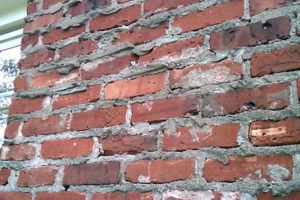Fall is that magical time of the year in New England when the trees paint the highway with vibrant red and orange. For many homeowners, it’s a reminder that winter is soon to follow. Just as animals are storing away food to embrace the shorter and colder days, there are steps that every homeowner should follow to plan for a disaster-free winter:
One: Schedule Your Gutter Cleaning
Your gutter helps to route rain water from the roof, away from the surrounding foundation of the house. This is important because excess water can erode your foundation which is obviously not good. Your gutter can get easily clogged with leaves and other aerial junk. This can lead to issues such as spillover, ice dams, and at worst, it can flood into your interior walls. Getting your gutters cleaned virtually eliminates these issues.
Two: Check Your Heating System
You don’t want to be caught without heat in a New England winter. The best time to avoid this is to check your system in the fall before the weather gets hostile! One simple way to check is to turn it on and see if it runs. While it’s running, check the various components. See if there’s a leak. Clean up any debris. For Steam Boilers, you should make sure to drain the tank to remove potential clogs in the radiators. Make sure to refill of course. For forced hot air furnaces, make sure to replace the filter and ensure vents are cleaned before use. It’s important to learn as much about your heating system as possible. It’s also recommended to have an annual maintenance performed on your system by an HVAC professional. Contact us for referrals!
Three: Check Your Chimney and Roof
For those lucky enough to still have a serviceable chimney, don’t ignore this majestic structure. More than just a ton of bricks, chimneys have largely been repurposed to route exhaust fumes and other harmful products out of your home. An unkept chimney can introduce blockages to your exhaust system, permeating dangerous fumes into your homes.
Four: Check Your Outdoor Plumbing
Many homes come with a garden spigot to allow for quick access to water from outside the house. This is a great amenity until you forget to turn it off and the water inside freezes over winter. A broken pipe water is an expensive problem to fix. As part of your Fall maintenance plan, make sure to turn off the source to the garden spigot internally and drain out any leftover water in the hose.
Five: Buy The Essentials
You might believe that your local hardware store has a bottomless inventory of goods but that’s hardly the case. Many stores are embracing a just-in-time inventory methodology which minimizes carrying cost. More ominously, this often means that if there is weather-induced demand, you’ll likely be fighting others for essential supplies. For instance, you’ll almost always see a shortage of ice melts during a snow storm, battery shortage during a major power outage, sump pump shortage during a flood, and more. Get the essentials ready and avoid the crowd when everyone needs it.
An ounce of prevention goes a long way. Much of homeownership is merely anticipating the upcoming challenges and figuring out the best course of action to handle it.
Lastly, if you are seeking contracting help with fall maintenance, please reach out for referrals.





